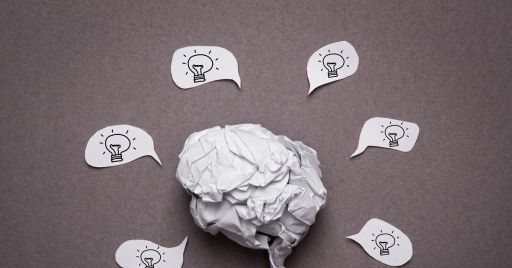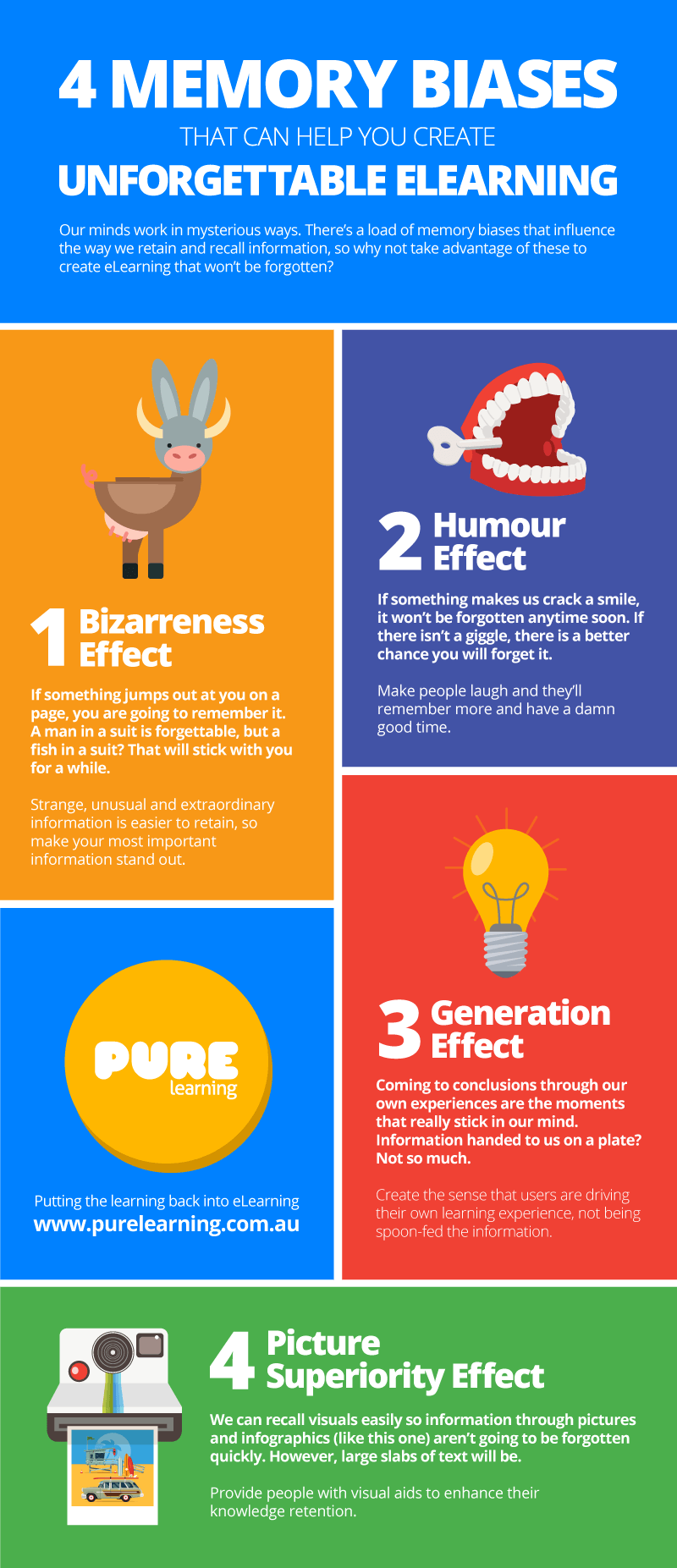

Memorability in eLearning - Infographic
Here is how cognitive distortions can be used effectively and productively in the creation of eLearning.
Memorability in eLearning - Infographic
Here is how cognitive distortions can be used effectively and productively in the creation of eLearning.
We have seen how to improve memory with methods and techniques that we can consciously apply in this article.
Cognitive distortions, on the other hand, are involuntary and deeply affect our choices and our memory. When we create an eLearning course it is good to play on these biases in order to ensure that the learned notions are retained in the memory. Only if the knowledge is retained can the learned notions and skills be applied in everyday work situations.
1. The effect of bizarreness
Strange, unusual and extraordinary information is easier to store, so it is good to highlight important notions with striking examples or associated images out of the ordinary.
2. The humor effect
Humor generates a powerful emotional response. If something makes us smile, we will not soon forget it. When people laugh, they remember more and enjoy it.
3. The generation effect
The conclusions we reach through our experiences are those that remain most impressed on us, unlike those that are delivered pre-packaged. It is important to create the feeling that it is the users who guide their learning experience, for example through the presentation of content in the form of questions, interactive activities. In short, anything that does not lead to passive learning, but on the contrary leads the user to think, to guide his or her learning and to really commit to knowing the information.
4. The effect of image superiority
By providing students with visual aids, they are more likely to improve their knowledge retention. It is easier to retrieve and store information through images than with large portions of text.
In eLearning, images are important: people will be able to recall information more easily if they make a connection with something they can imagine in their head. For this reason diagrams, tables and charts are often used in work environments. Visual information is much easier to store than written information. At the same time, words are a vital part of the way we communicate and can be used incredibly effectively with images.
Translated with www.DeepL.com/Translator
